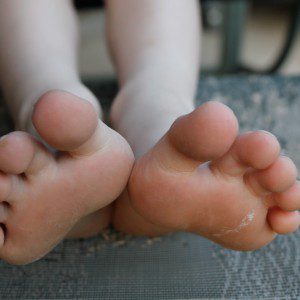
Sort of.
See, you have to make a connection with the Earth in order to have a transmission of energy. The Earth has a lot of energy to give and we rarely take advantage of that. If your lawn has survived the drought in San Luis Obispo County, you can go outside and stand on the grass, or you can walk around on the dirt, but these methods don’t work for everyone. Especially when it’s 107⁰F in Paso Robles. Dry grass and rocks are sharp and dirt is, well, dirty. To top that off, any concrete or stone is going to be extra hot. What if you want to ground yourself indoors?
It is possible. There are companies out there selling mats and blankets that connect to the ground of an electrical socket in your home, but their coverage is limited. Instead, you can make your entire home a place to connect with the energy of the Earth with concrete. The home can’t be on an elevated foundation or use a vapor barrier to do it, but it is possible. For homes in either of these situations, a patio can be built or replaced in concrete without a vapor barrier or a sealer for grounding on concrete. Concrete is made up of water, sand, crushed stone, and cement (usually with a little bit of air trapped inside, too). All of these come from the earth, even the cement, which is typically comprised of lime, iron, silica, and alumina. By connecting the concrete directly to the soil without any vapor barrier between the two, then leaving off the sealer on top so that your feet can make a direct connection, you are Earthing in and around your own home any time you kick off your shoes.
Many San Luis Obispo concrete sidewalks are the same way; just concrete on the Earth with no concrete sealer, but that doesn’t mean your home needs to be the same foggy shade of tombstone gray in order to try grounding on concrete in your own home. We specialize in decorative concrete applications in San Luis Obispo, Santa Barbara, and Monterey Counties, and can use additives and grinding techniques to still give your home or patio a beautiful finish. Contact us today!
Here are just a few of the benefits of Earthing*:
- Electron Transfer
- Antioxidant
- Anti-Inflammatory
- Better Sleep
- Less Pain
- Reduced Anxiety
- Neutralizing Free Radicals (could slow aging)
- Fewer Headaches and Migraines
- Faster Healing (especially from exercise-induced fatigue)
- Reduce Loss of Calcium and Phosphorous
*Please keep in mind, we’re a concrete contractor, not a medical doctor. These benefits have been found by multiple researchers, but speak with your doctor before assuming anything is a cure or treatment program.
